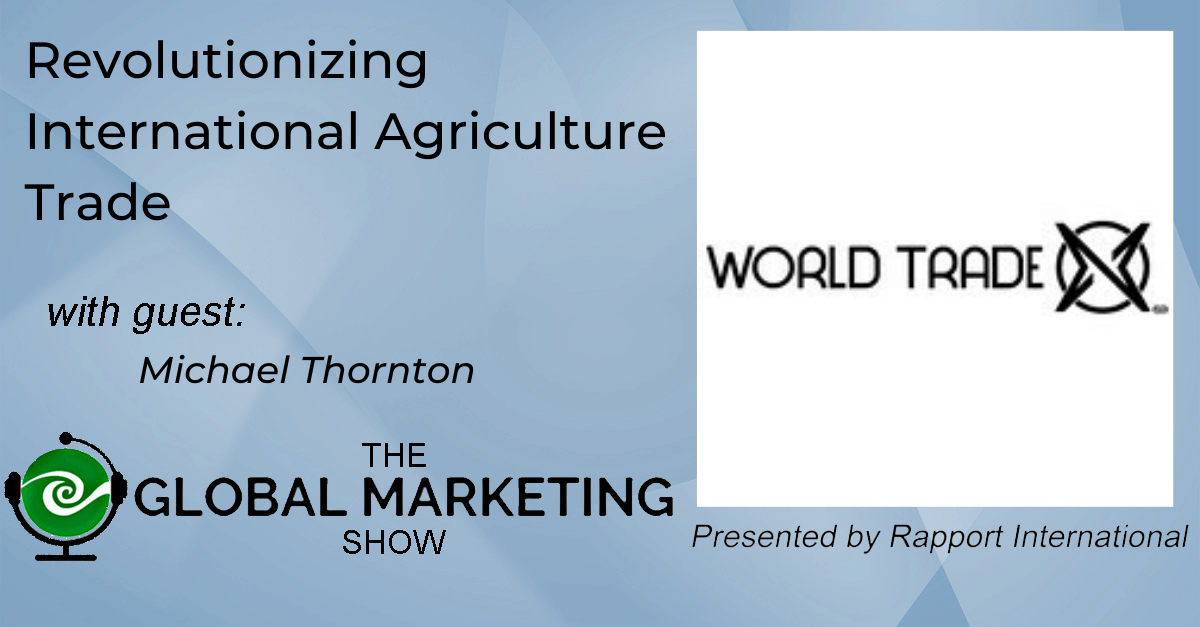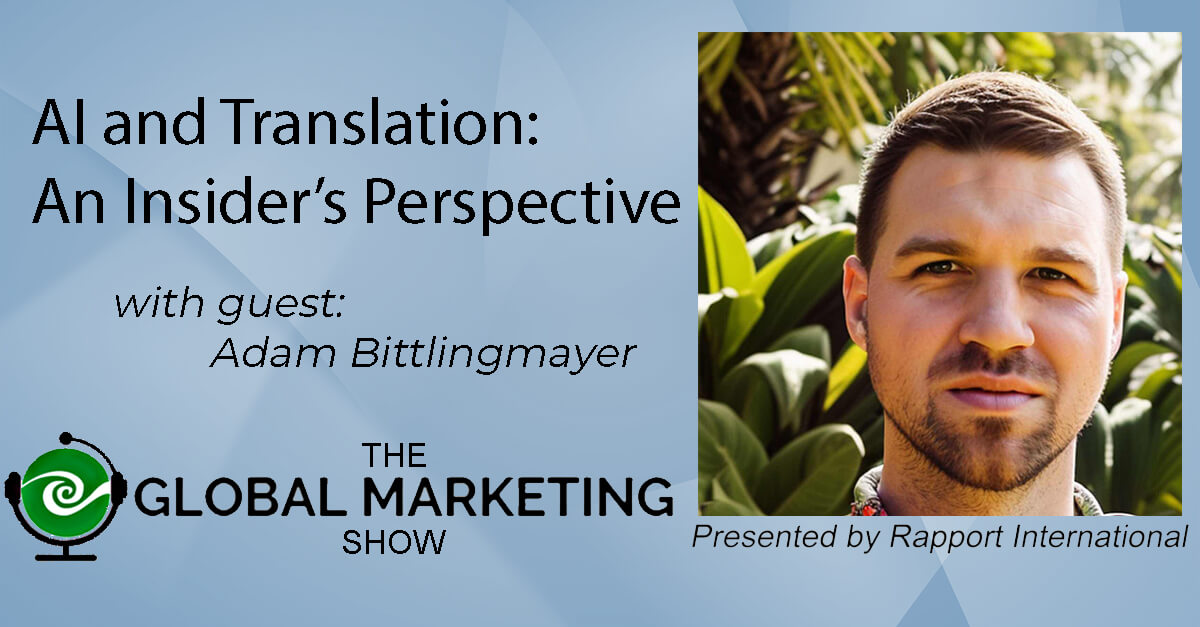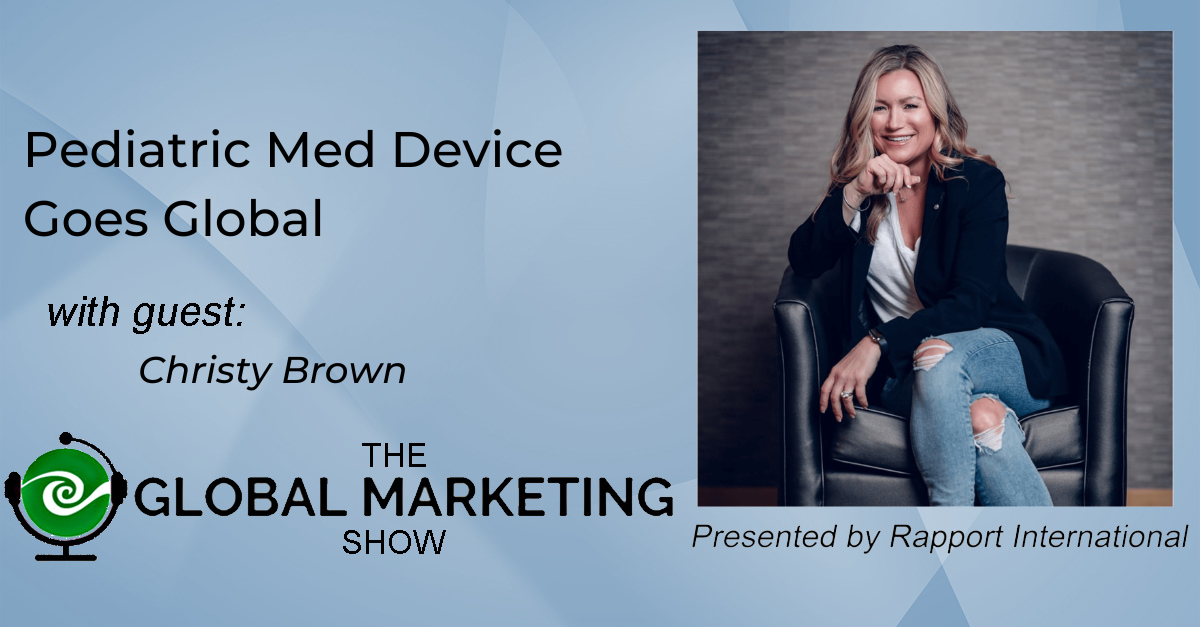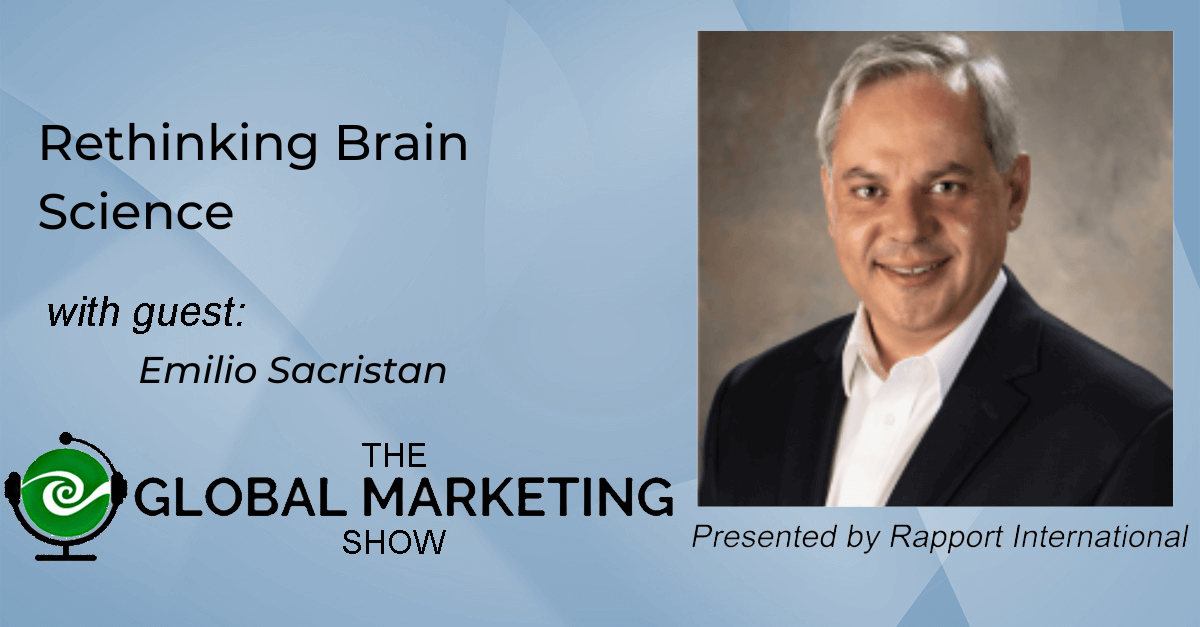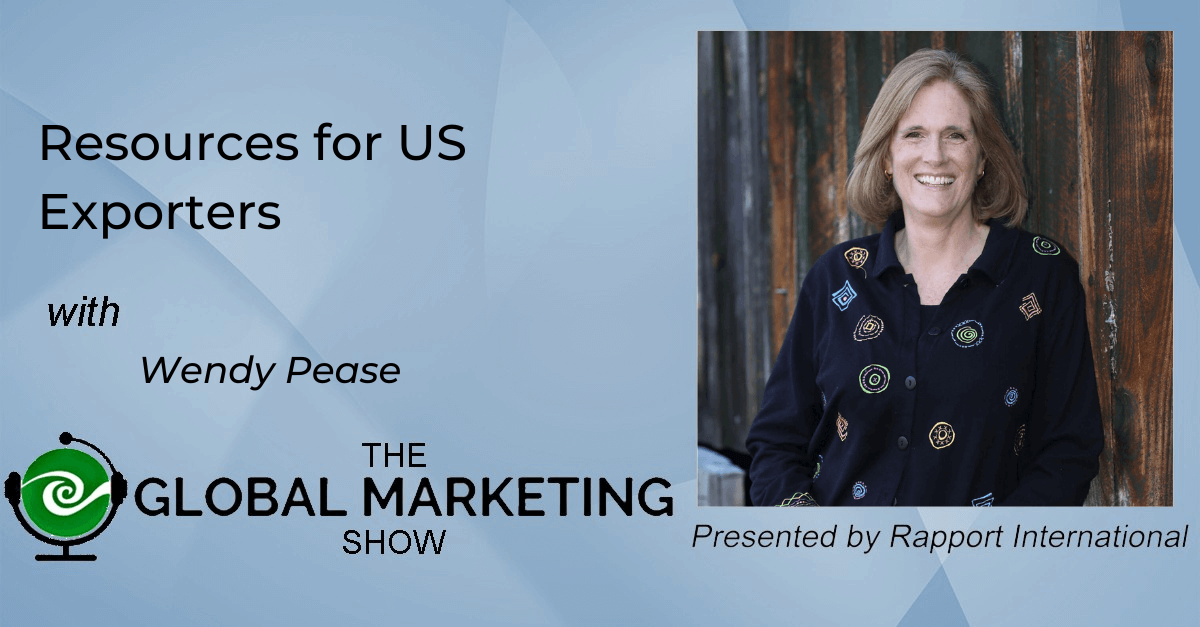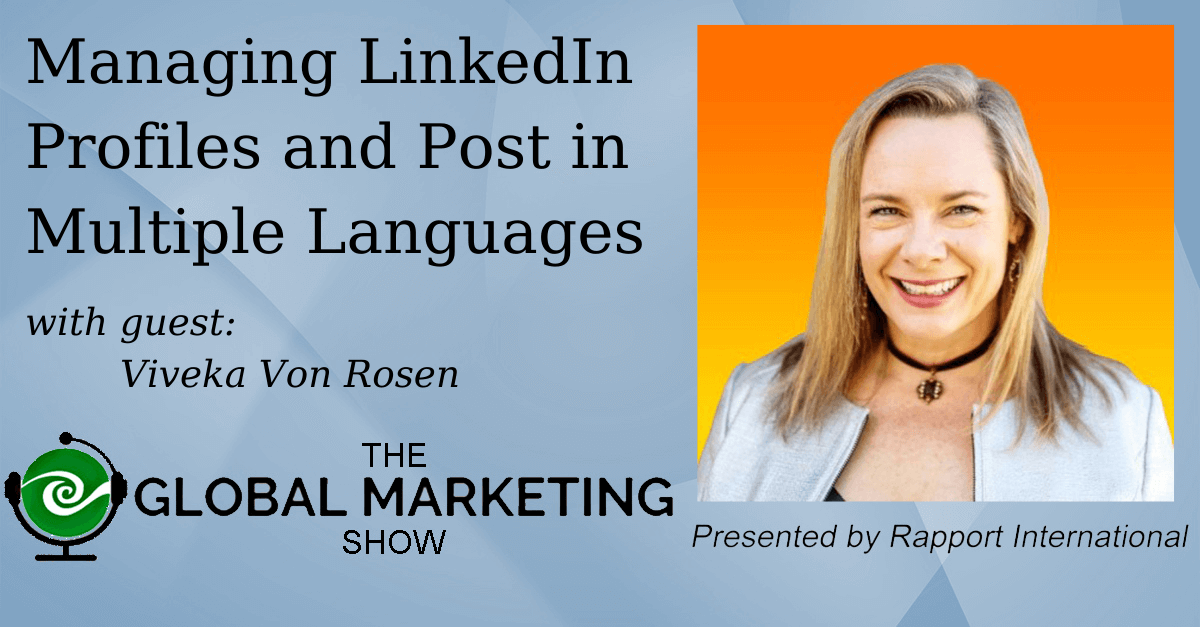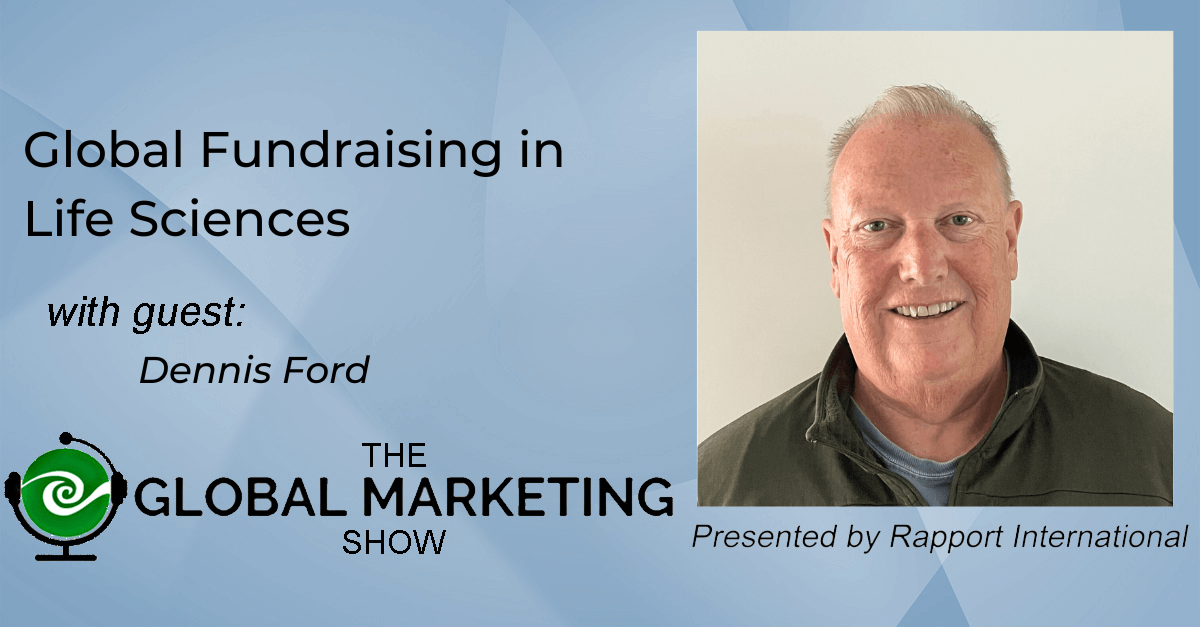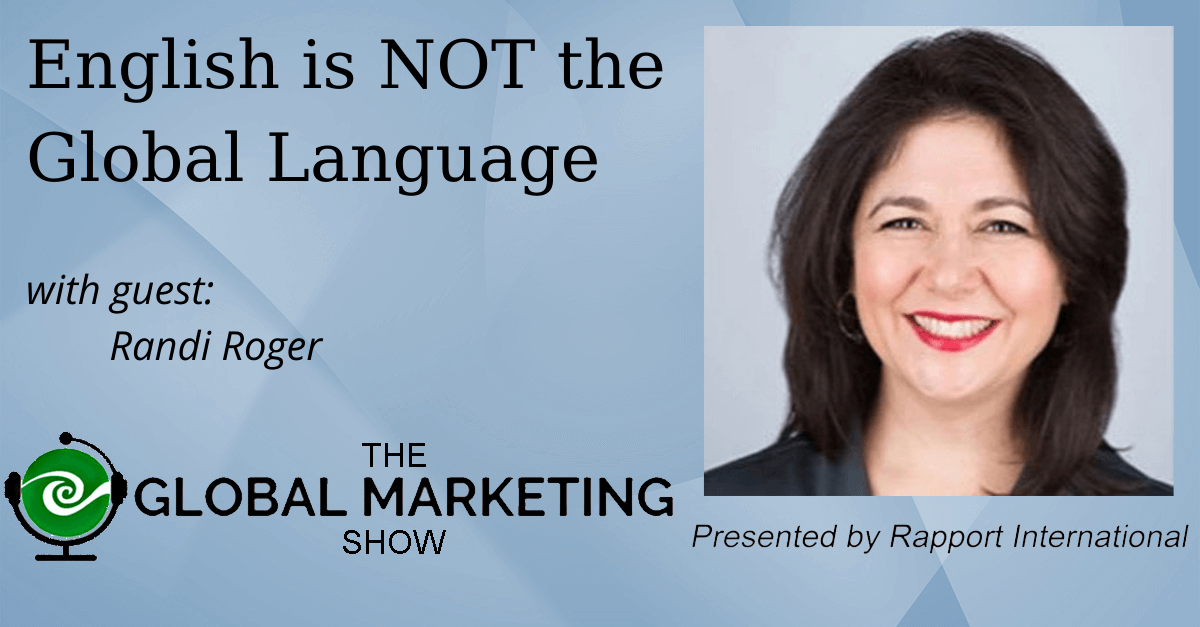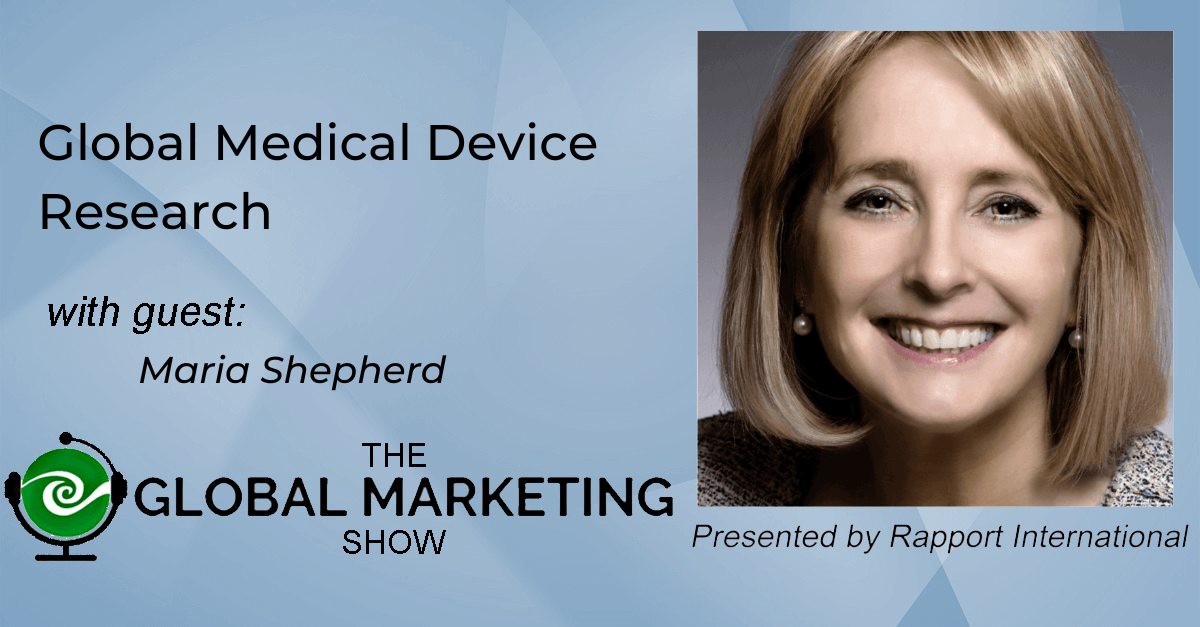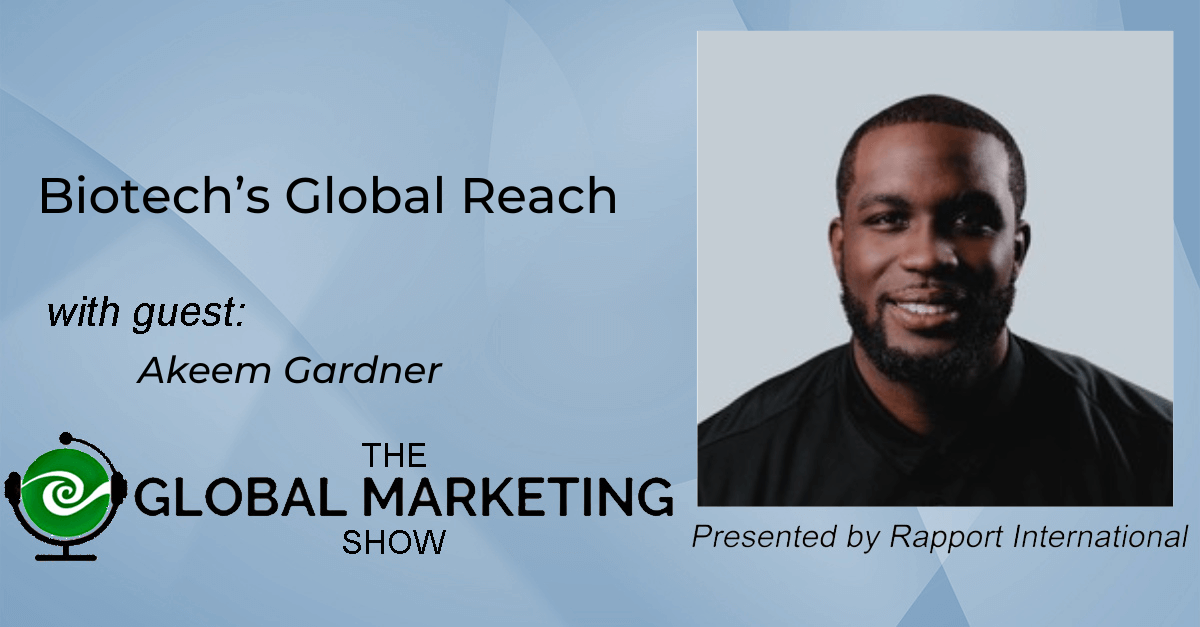Marcus Mogéus, Chief Marketing Officer of AutoStore, explains that when you maximize efficient use of your space, you help the environment and the planet by minimizing your land usage – for industrial buildings, for instance. AutoStore helps warehouses, manufacturers, ecommerce companies and grocery stores optimize logistics and simplify fulfillment; the need for such services are clear, based on the company’s growth. With over 50% CAGR over the last 10 years, and over 70% CAGR during Covid, AutoStore’s global growth has been consistently explosive.
When AutoStore started in 1996 in a small town in Norway, its founder thought about global expansion from the start. Their mantra then and now:
“Let’s get as many bins as there are people in the world.”
To do this, they built a proprietary system that uses robots and tracks to move storage bins quickly to fulfill orders. Each system is custom-designed and -built for the client.
Operating in in over 45+ countries through a network of qualified partners and servicing multiple industries, Marcus’s biggest challenge in global marketing has been getting the messages right across countries and industries. For example, some countries focus on decreasing the costs of human involvement, while others want to focus on increased automation. Yet, it’s not as easy as localizing the message for each country.
Industries vary in what they want from AutoStore’s cube storage automation. An online apparel store cares about the speed of fulfillment, while an industrial products company may care more about cost efficiencies. These differences can then align across countries.
Marcus explains that language translation is an important part of their go-to-market strategy. AutoStore works with local agencies for translation, while coordinating global branding and messaging with the corporate office. Our focus is always on the human element and what the customers can achieve, he adds, and that simple goal has revolutionized automated fulfillment.
Links:
Website: https://www.autostoresystem.com/
LinkedIn: https://www.linkedin.com/in/marcus-mog%C3%A9us-52501194/
Connect with Wendy: https://www.linkedin.com/in/wendypease/
Music: Fiddle-De-Dee by Shane Ivers https://www.silvermansound.com
ATTENTION: Below is a machine generated transcription of the podcast. Yes, at Rapport International, we talk a lot about how machine translation is not good quality. Here you see an example of what a machine can do in your own your language. This transcription is provided as a gist and to give time indicators to find a topic of interest.
Wendy: Welcome to another Global Marketing Show podcast. I am so glad that you're here today because we're gonna have a fascinating story of a company that started in Norway and has had tremendous growth. We're gonna welcome the Chief Marketing Officer, but before we get into that, let me just remind you that the podcast is sponsored by Rapport International who provides translation [00:01:00] services in over 200 languages. And they like to do tidbits and cultural education. So for today, let's talk about envy. Some business owners may have envy today when they hear about the growth rates of AutoStore. So when you think of a color to go with envy, what do you think of?
Is somebody green with envy or are they yellow with envy? In English, we associate the color green with feelings of envy or jealousy. And it's also true in other languages like Spanish, Dutch, Norwegian, Finnish and other languages. But in French and German, you can be both green and yellow with envy. So colors do make a difference in global marketing.
All right, so onto today's guest. We are welcoming Marcus Mogéus and he is the CMO at AutoStore. He's been there two years, but he's had tremendous growth through the company. He's been in three different [00:02:00] roles after starting as a consultant, so he's had quick promotions. Prior to this, he worked at PWC in KPMG.
He was in the M & A advisory groups working with private equity and large corporations. So I know he's gonna be an impressive person to talk about the growth. So, Marcus, welcome.
Marcus: Yeah. Thank you Wendy, for
Wendy: having me, . Oh, I am so excited to hear your story and AutoStore's story. So why don't you tell me a little bit about AutoStore and how it got founded, cuz it's an interesting story to me.
Marcus: Yeah, so it all started with the idea of optimizing space in the warehouse. In the company by then. Uh, we belonged to a company called Group which was a Norwegian industrial technology company. And it was the technical director back then in Verna Land who wanted optimize their own [00:03:00] warehouses.
And he put forward the idea of storing goods in a sort of Rubik's cube. And, and that resulted later on to out store and cube Storage Technology.
Wendy: Okay. And so ta tell me about how that works and how out store enables that.
Marcus: Yeah. So to, to explain how the cubic storage is, is. Yeah, imagine you have beans with products in them stacked on each other, and those bins are inside a aluminum grid structure.
And on top of that structure you have tracks with robots running on top of them, picking up those bins, and then transport them to the ports that are attached to this construction outside where you either have people or robots picking up the product. Preparing them for, for, for ordering and delivery to the customers.
Wendy: So does Auto [00:04:00] Store provide the technology or does, do you provide the whole structure? Like automating, like coming in and building
Marcus: the robots? Yeah, so yeah, so we manufacture the hardware of the system with suppliers, so the robots and, and the ports and, and, uh, and the. But then we have in our go-to market, we have partnerships of distributors globally and regionally.
That helps us to both design the system with the customer, but also install it and decommissioning it and commissioning it, sorry,
Wendy: and commissioning it. Right? And so each one, each commission would be unique. To that storage facility. Yeah,
Marcus: yeah, yeah, exactly. And, and that's why our, you know, our system is very modular, so it's very flexible around how the warehouse looks like, or if you used out to store behind [00:05:00] your store at the mall, for example.
So it's, it's very flexible in the design.
Wendy: Okay. All right. And so it started in a small town in Norway.
Marcus: Yes. Yeah, yeah, yeah. So it was in a small village called Near on the west coast of Norway and since then we have grown to become a, a global company. So it, it, you know, as I started in, in 1996, after that 10 years, we were were acquired by Arrow Electronic.
Which later then announced Auto Store as a spinoff. And, and then we went through a commercial phase and, and grew quite much before Covid, but also during Covid, we, we experienced quite a growth. And, and in 2021 we were also listed at the Oslo Stock Exchange here in Norway.
Wendy: Okay. Okay, so you just put a lot of information, sentences, and I gotta figure out which way to go.
So [00:06:00] you're, you're founded in, so you're in a small town in Norway. So I'd like to know about, you know, was the original vision to go global from the start. And then you went from, you know, being a small company to, on the stock exchange within. What, like 20 years or
something?
Marcus: Yeah, yeah, yeah. Approximately.
Yeah.
Wendy: Okay. So start with the, the original concept and what the plan was to go internationally. Were you thinking you'd be a Norwegian company or were you thinking, or was the co you weren't there at the time, or was the company thinking global from the
Marcus: start? Yeah, but I, I know from my colleagues a very, internal famous statement from, from.
Back then was that the, there should be as many beans as people in the world. And that was before we even had the first site that the customers, so the company has back then all [00:07:00] always had global ambitions. And really strong belief in our technology. So, and, and that really, you know, you can see that in the culture of the company as well, that, you know, there always been global ambitions and, and, and, and, and that has continued the growth.
Wendy: Yeah, I love that. In the US many companies don't think global from the start or you know, in other large countries, cuz they think, oh, the domestic market is so big. But here you've got a Norwegian company that thinks global from the start.
Marcus: So, yeah. Yeah. It, it, yeah. It's, it's it's, uh, and, and talking with colleagues that was, you know, working without the store or, you know, at the co at at the time.
They just say that it's, it's a fantastic journey of, of really, you know, being near D's, talking about global ambitions. And now 20, 25 years later, we are at that, that stage.
Wendy: Yes. Okay. So, [00:08:00] Tell me about the growth. I mean, you've had phenomenal year over year growth for a long, sustained period of time and had greater growth during Covid.
Yeah. So break that down for me.
Marcus: Yeah. So, in the last 10 years, we have, uh, realized the carrier of 50% year over year. And during Covid, uh, it, it's been more than that. So what we have seen is that before Covid, there were already. Mega trends that supported the automation need in warehouses. But with covid, that increased even further.
Very much when we moved more from offline to online for, for retailers and, uh, an an e-commerce boomed, even more so. So that's the, the, the trends that we have seen.
Wendy: Okay. That makes a lot of sense now, like during Covid, with so many people shopping online, then all the supply Yeah. Uh, or the warehouses were [00:09:00] struggling to upgrade and keep up.
Marcus: Yeah. Yeah. So, uh, as we have seen, so total volumes typically, you know, follows and increases in relationship to the g d. But if we, wait,
wait,
Wendy: say that again. Say that again. And that was very
Marcus: interesting to me. Yeah. So the total volumes of, of transport, we often see, especially business to consumers following uh, similar as the G D P.
But what we saw when moving from offline to online, it's a complete different complexity. Because if you only have offline transporting, you know, goods on pallets on a regular, uh, schedule to stores, it's, it's scheduled and it's, it's. It's quite standard, but if you manage the same volume, but with many, many more orders to different places in your market, that presents a complete other complexity for, for the logistics and warehouse [00:10:00] managers and to be able to steer your logistics and be efficient then you need automat.
So just take an example. Uh, if I follow that up by an example, let's say we take the grocery space in the, in the us before Covid there, the online volume was around two to 3%. But after Covid and, and yeah, then it was small volumes. It could be managed by the store either by the retailers themselves or using Instacart, Instacart, or such.
But as the online volumes grow to what we estimate around 10%, the complexity of handling that volume increased quite a lot. And if you used your existing processes, you could, you know, For the customers in the store, it could be a very bad experience having people running around [00:11:00] doing online picking.
So then the retailers need to reevaluate how they handle that online. Volumes basically. So we have seen quite an increase in the automation because of that. .
Wendy: Okay, so number one, I'm surprised that only two to 3% were online purchases and only 10%. I thought that, you know, with the number of delivery trucks that I see through my neighborhood, I would've ex expected that to be higher.
But then I guess if you put in cars, groceries, And large, large goods.
Marcus: Yeah. Yeah. This was, this was mainly related to grocery. So, so grocery online, pure grocery, yeah.
Wendy: Oh, I see. So this was grocery. So few people were shopping online, but it increased to 10% and it's maintained 10%
Marcus: since then. Yeah. Yeah, so in, in grocery as other [00:12:00] other segments such as apparel as such, we saw, you know, similar growth.
But then when more and more opened up, we saw a little bit of a downturn, and then that flattened a little bit. So now it's a more baseline a little bit lower what we saw in Covid, but now increasing, but at a, at a slower rate. .
Wendy: Okay. So some people have started returning to the stores, but it definitely affected how much was going online.
And then you make a very interesting point that I hadn't thought about is, yeah, if you're shipping to a store and then somebody's unloading it and putting it on shelves, it's you, you're doing bulk shipments, not the one by one shipments. No, exactly. Yeah. And so, Talk to me more about that, because that's also a completely different
Marcus: setup.
Yeah, yeah. And, and, and that's, and, and, and with that comes more customer demand on having more flexible [00:13:00] options of, you know, curbside, peaky pick up and, and all that. So, so the omnichannel strategy for retailers. Even increasing to manage that seeming less customer experience.
Wendy: Say a company go from fulfilling, like you talked about all the different ways that people could handle it.
Like you've got somebody running around the floor and picking, you've got, you know, a warehouse that's, or you're fulfilling it yourself from the back office too, when you need to go to a store and think of, its automated cuz there's, there's gotta be different inflection points on there. So what are you seeing there?
Marcus: Yeah. Yeah. And it, it can be very different from, from, uh, segment to segment. But, uh, for example, we have a in-store, out store with Lon in Canada which is a quite interesting concept because they, uh, with implementing the out store, they increased the warehouse [00:14:00] volumes of stock, quite a. So what they have enabled now is to have more freed up space for improving their customer experience in the store, but also they can fulfill their customer orders online from that store to, to the whole country, which have increased their, you know, addressable market and, and, and network quite a lot.
Wendy: So they're not subcontracting out to a warehouse. They've built their own warehouse that's near the store so they can receive goods.
Marcus: So put it in the warehouse or move it. Yeah. So, yeah, exactly. So actually it is behind their store in a mall on the second floor. So it's a quite impressive, uh, solution they have.
They have installed.
Wendy: Okay. So auto store isn't like, your target market is not just warehouses and supply. Yeah. No,
Marcus: exactly. So [00:15:00] we cover sort of the whole spectrum from being a, you know, an in-store storage application, fulfilling both products for the store and online. To micro fulfillment, dark stores up to, you know, large large, high throughput applications.
Wendy: So what's the smallest throughput or company that you'd work with?
Marcus: Oh, it's a, it's a good question. As long as the products fit in our bin, I would say most often we are a very good, viable business case for a business to, to use. But I, you know an initial investment can also, it depends about how many robots you need and how many SKUs you have, et cetera.
So it, it depends a bit. .
Wendy: Right, right. So I'm just thinking about all the e-commerce companies that have popped up. Yeah. And they go from fulfilling on their own to thinking, oh, I can't [00:16:00] manage this anymore. I need to do something better. Like, what's that point when they'd start looking to you?
Marcus: Typically, they should have a couple of million dollars in, in revenue.
But that is also something we have identified that, of course we have these large E-com players, but we also see that the market, as you say, is consisting of several smaller E-com players, as we call the SMBs. And what we have done now is to develop a concept to also enabling automation for them. So we have launched a new type of pricing.
which previously we only focused on full up upfront CapEx, but now we also enable more opex related pricing models as well to enable smaller companies to, to, to leverage the, the benefits of having automation as well. .
Wendy: Okay. So I just wanna clarify a couple of terms because you have an MBA [00:17:00] or a Master's of science in finance, in economics and supply chain.
And so you're throwing around opex and CapEx. Now, luckily I know what they mean. Capital expenditure is when you have to put money up front and you're buying something that you're gonna put in. Is operational expenses, which you're gonna pay as you go. So yes, I mean, Marcus is a brilliant guy here because he's, he specializes in some, you know, his specialty is completely different area, but now he's doing marketing.
So just to clarify those terms. Okay, so now you're, you're, rather than somebody having to come up with a big capital expenditure, you're, you're enabling them to pay as they go. Yes. To use
Marcus: services. Yeah, exactly. So we have decreased the upfront payment to approximately 20 to 30%, depends on the, on the, on the design.
But then you [00:18:00] pay per pick. So when you pick up a, a product for an ordering, then you pay a small number related to that. So pay as you go basical. .
Wendy: And does this help at all with global
Marcus: distribution? Yeah, so I would say, and also given current macroenvironment, this enables more customers that potentially have more, you know, not as you know, the financial balance sheet to, to, to take on more loans.
Then they have more easier threshold to, to, to access automation basically.
Wendy: So the automation would help pick and pack it, but they still have to figure out all the global regulations, laws, shipping, and all that.
Marcus: Yeah, exactly. So what? Yeah, so what we help with is the, the, the storing and and order fulfillment.
So storage and retrieval of the, of the. [00:19:00]
Wendy: Okay, so you can cut down your expenses for that so you can open to global markets and make it seem like, okay, so now let's switch it over to global marketing. So you've taken over this fast growing company. Tell me how are you going to market and spreading the world to your target markets?
Marcus: Yeah. So first of all, we have a go to market model, which includes our partners and their marketing teams. So we enabling them quite a lot. And then, We also have our own team that focusing very much on, on two goals and, and one is the brand awareness and general awareness around warehouse automation because it's still very new to a lot of customers in, in different regions, but also different segments.
So I think that is one of our main goals to, to increase that awareness in the market. .
Wendy: Okay. And coming out [00:20:00] of Norway, which countries. are you focused on building your brand in?
Marcus: Yeah, so today we are present, as you say, Norway, the us most of the places in, in Europe, but also we have, you know, we have been established in, in Japan and South Korea as well.
And also our APAC headquarters is in, in Singapore, but we have sales in, in most of the countries in in APAC as well. , but there we have established offices. Okay.
Wendy: Are you in, are you in China?
Marcus: We don't have an office in China, but we have sites in China.
Wendy: Si Okay. So you do sell into there, but maybe from some of the other.
Okay. Yeah. And then how did you decide which countries to go into?
Marcus: It's based a bit on the characteristics. So of course the business case about automation historically has been very much focused on, you know, what's the [00:21:00] cost efficiencies. You know, can I run my operations with fewer people? So, of course, labor costs and, and, uh, rent for warehouse spaces is two drivers.
But also, you know, the, the density in the countries and the adapt adaption to adoption to uh, automation. Japan and South Korea, especially in, in apac, have come a long way in that, in that sense. Um, but we also see with the business case now turning a little bit, so more focused also on driving and enabling your growth you know, store more in the space that you have and, and be more effective towards the customers.
So also adoption of online is. interesting factor.
Wendy: Mm-hmm. . And how do you run your global marketing? Is it done out centralized or is it more decentralized? How do you come up with your messaging or [00:22:00] differentiators and then how are you translating that to connect with your different markets?
Marcus: Yeah, that's a, that's a good question. So we have what we call a global team that is based out of, nor. where we do everything from product, marketing, brand and content creative and channels and data and, and so on and, and communication. But then we, in our key markets, we have what we call regional marketing where we have managers, as you said, managing the translation of content, the distribution of it.
Make sure that we come across with our messaging in the right, in the right and most efficient way. Because a market like Germany is different compared to the UK or the us. so we put a lot of efforts into that.
Wendy: Okay. So talk to me about the differences that you'd see. I mean, you're. How you, you said how you do it in Germany versus the [00:23:00] u uk are very different yet you're still talking about efficiencies and pick and pack, and so how do you have to adapt that for each market?
Marcus: Yeah. Yeah. It's, it's an interesting question and I think it, it, it's both different if we look at segments of, uh, you know, a e-com player have different needs and, and pain points compared to a industrial company or a healthcare company using our system or, or. Potentially want to use it. And, but across the markets, I would say we see different adoptions, for example, in, in the grocery space in, in Germany compared to the US for example.
That's one, but, but also the adoption of micro fulfillment centers. So it can be, it can be different across the different countries in. .
Wendy: How, how is it different, the groceries in Germany versus the us? I'm always fascinated about buying and selling
Marcus: across countries. No, [00:24:00] I, I, I would say the, the online is a bit lower in, in Germany compared to the us and they have, they're more focused on the large chains and price points, I would say.
Oh, that we have
Wendy: seen. Okay. And so that means like grocery stores may be less of a target market in Germany.
Marcus: I wouldn't say less of a market, but I think the, the adoption may take a little bit longer time.
Wendy: Okay. Okay. And so when you're, okay, so when you're adapting it, it sounds like you're adapting it.
By country culture and more by industry culture.
Marcus: Yeah. I, I think that is, that is a good reference because we see that, for example, a e-com player have different pain points or key you know, success factors compared to an industrial player. So let's [00:25:00] say we take e-comm where you. The, the trends of, you know, customer demand of lead times shipping time is, is much shorter, uh, every year.
And, and, and that requires some sort of, of automation. So, for example, we have a site with Boost, which is one of the n largest online apparel stores in, in the Nordics. And when a customer are ordering something, , it takes 48 seconds from that order until the product is provided at the port ready to be, to be picked and packed basically.
And that, that, that's competitive
Wendy: My, if you could see me on video, my mouth is dropping 48 seconds. You're talking less than a minute for the order to go in and be ready to be picked and packed. If you have your automation system in there, that means that can happen. Because it's all set up to happen immediately. Nobody has to [00:26:00] read it, get there, find out there's a mistake, or interpret it or you know.
So how long would it take to pick and pack and get it? Yeah.
Marcus: Yeah. It's different. But uh, I know at that site they're very efficient, so, So it's very quick. And, but if we compare that those type of, you know, competitiveness and, and need to stand out in, in that market, we can compare to the industrial space where maybe the, that type of key success factor is not as important as you know, or, you know, inventory accuracy, picking accuracy.
We have sites, you know, with warehouses close to the assembly line or a production line, and then the need for knowing what you have for screws and bolts and so on is, is very important so you don't have to stop the line. So we see those type of differences and, and, you know, that makes the messaging and, and all that very, very [00:27:00] important.
Wendy: Yes. Okay. Okay. This is amazing. All right, so now what have you struggled the most with in global marketing?
Marcus: Yeah, I would say, you know, there are, you know, the benefits of our system and, and what potential cultures and companies want to achieve can be d. So let's say in Japan and South Korea they don't emphasize as much on, you know, cost efficiencies, especially related to people, but more want to, you know, realize operational efficiencies such as, you know delivery times time from order to, to pick and, and all that.
So, so that is a challenge to understand the cultural differences and, and how we should message the, the success factors from, from using our system. Uh, so that's, that's one example.
Wendy: Okay. So [00:28:00] that is the biggest thing with global marketing is really making sure the message resonates through. And how do you, how do you do your market research?
Marcus: Yeah. So we figure that out. Yeah. So we both, both do it internally, but then we also use, uh, local agencies to, to support us in that. And also you know, everything from insights gathering, but also in the help of messaging in the right way and, and, and translation. So we come across in, in the right way.
Yeah.
Wendy: Okay. And then how do you make sure your translation is accurate?
Marcus: Yeah. So we have our regional marketing managers that is you know, proofreading, make sure that it's, it comes across the right way. And then I think it's about building up a good relationship with the agency that helps us. So we make sure that they understand our product, our industry, and the right wordings et cetera.
Wendy: And then are they [00:29:00] finding a local translation agency in each market?
Marcus: Yeah, so it's a bit different from country to country. In some we have local translation, and in some we have more. You know, it's the same company in two or three countries. .
Wendy: Okay. And so you really don't manage that from a global level at all?
Marcus: No. So we, we coordinate and, and we have used global before. But we, we moved out to, to more having it on a regional and local basis.
Wendy: So if you have a translation done in Spain, you know you have Spanish done. In Spain, and then you would have it also done in any South American countries if you're in there.
Right. And so you would have a different locally created message going on, and you're paying multiple times for the Spanish translation.
Marcus: Oh, okay. Okay. No, I, yeah, no, no. So that, that is not happening. So we don't, we don't [00:30:00] have, you know, we are not doing the same translation in the same in the same language.
So that is coordinated by global. So we will leverage. Our translation in, in the right way.
Wendy: Oh, okay. Okay. Cuz that's sometimes that I, you know, I always wonder if companies are doing it in the local markets. They're losing so many efficiencies and spending more money. I I, if the messages Yeah. Are similar country to country and industry To industry, yeah.
Marcus: Yeah. I, I, I've seen that before. But that is why we have, have that coordinated centrally and together with our regional marketing
Wendy: manager, Right, right. I could keep going because I'm so fascinated about what you've accomplished and what you've done. Where do you see taking the company as you've, or you're fairly recent in the C m O role?
What are your, your goals?
Marcus: Yes. I would say, you know, our big mission for our, you know, us for our organization is [00:31:00] to, is to create space. So, The idea of optimizing space is, is our bigger mission where our technology reduces the warehouse. As we talked about earlier, you know, in the, if you in the same space as your warehouse today, you win an outer store, you can.
you know, warehouse the same amount in, you know, less, in 75% less space percentage. So, so what we, you know, with our technology you releases both time, space, and energy, uh, because it's very, it's a very, also very sustainable, uh, solution. Uh, and this we believe can be used. To explore new landscape of opportunities.
So really a capacity for the benefit of both businesses as we have discussed, but also society and the planet. So everything from the trends [00:32:00] we are in discussion around, you know, smart cities and, and really leverage. And, and maximize the, the, the space that is existing.
Wendy: Yeah. And so, you know, how do you as so I see that as your global vision, which I think is phenomenal cuz I hadn't put that together about the smart cities and saving the planet.
But if you use the space, that makes sense. So what are your action items on going forward? Like how are you gonna do that with global market?
Marcus: Yeah, I would say historically, you know, as we grow, Eleg grew, historically we focus very much on technology, in our marketing, presenting, you know, what's the, our KPIs, what is the benefits, and, you know, uptime of the system and peak accuracy, et cetera, et cetera.
But what we will focus on going forward is to include more of. The human element, uh, more and more in our storytelling [00:33:00] focusing on. On our solution and what our customers can achieve, the society, et cetera. So as many as I mentioned, you know, our mission is to create more space for, for citizens' livelihood in a way.
Wendy: Ah, yes. Okay. Which is very interesting because in a lot of uh, companies outside of the US I say, are more. Tactically based, you know, features based, which those are what the numbers and yeah, that's what you're gonna buy on, but what are you gonna start exploring on is you want those, those benefits.
So, yeah. So, uh, yeah, sounds like you're the right person for the role and I'm so impressed with what you've done. So, you know, I always, always like to ask this question towards the end of the, the podcast interview. What's your favorite foreign word?
Marcus: Yeah. Yeah. It's a, it's a, it's a fun question. So I would say as, as coming from Sweden, we have one word that is in Swedish, it's pronounced [00:34:00] log, uh, and I believe it's a word that is not really existing in other type of languages, but it's between enough and like, okay.
Sort of, so that is also my approach a little bit to try to keep it simple and, you know, always plan and so on. But, but focus on, on also execution. So that's why I, you know, I love the, the books of Marcus Sheridan of, you know, they ask you tell if we taught marketing books. I just love, I love that book,
Wendy: I do too. I talk about it all the time. I have sitting on the desk , and the other one I have on my desk is the one that I wrote. It's called The Language of Global Marketing. So I use a lot of his concepts or I refer to his concepts in my book. Yes, I love Marcus Sheridan . Yeah. Yeah, that's great. Keep it, keep [00:35:00] it simple.
And so can you say the Swedish word for us again?
Oh, that's a good one. Okay. Well, Marcus, you have been Marcus Mos rather than Sheridan. You have been absolutely fascinating with talking about logistics, cuz that's been such a hot topic and how people can simplify. Where can people reach you if they'd like more information?
Marcus: Yeah, so they are always welcome to contact me on, on my LinkedIn page.
And also you can con, you can reach me through our homepage. We have a contact form there as well.
Wendy: Okay. And go ahead and, spell your name and then spell your website, your homepage. Yeah, so
Marcus: my name is Marcus with a c mo Gis, m o g e u s. So you can find me on LinkedIn. And our homepage at Auto Store is out to store system.com.
Wendy: Auto store [00:36:00] system.com. Well, thank you so much. I appreciate you being here.
Marcus: Yeah, thank you as well. Lovely to be here. Okay?
Wendy: Yes. Thank you. Okay. So if you enjoyed this episode, pass it on to somebody that you know who has an e e-commerce company or a retail store, or a warehouse, because if they haven't heard about auto store before, this sounds like.
Phenomenal opportunity on how to streamline and save the environment. And also if you want to listen to any more of our podcast episodes, you can always go to Rapport translations and search for the podcast to see all, to listen to all sorts of good episodes. And if you don't wanna go there, of course you can find us on Spotify and Amazon and anyplace else.
Love your feedback. So come on back next time and we'll have another good guest for you.
[00:37:00]
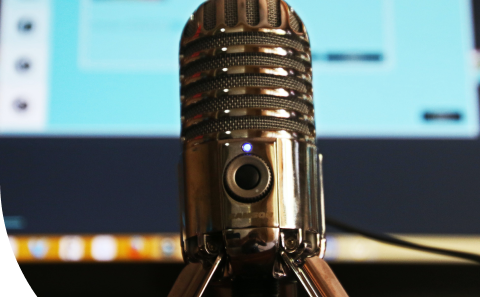
Are you a global marketing professional with stories to share?
Popular Posts
Popular industry news, interviews, technologies, and resources.
